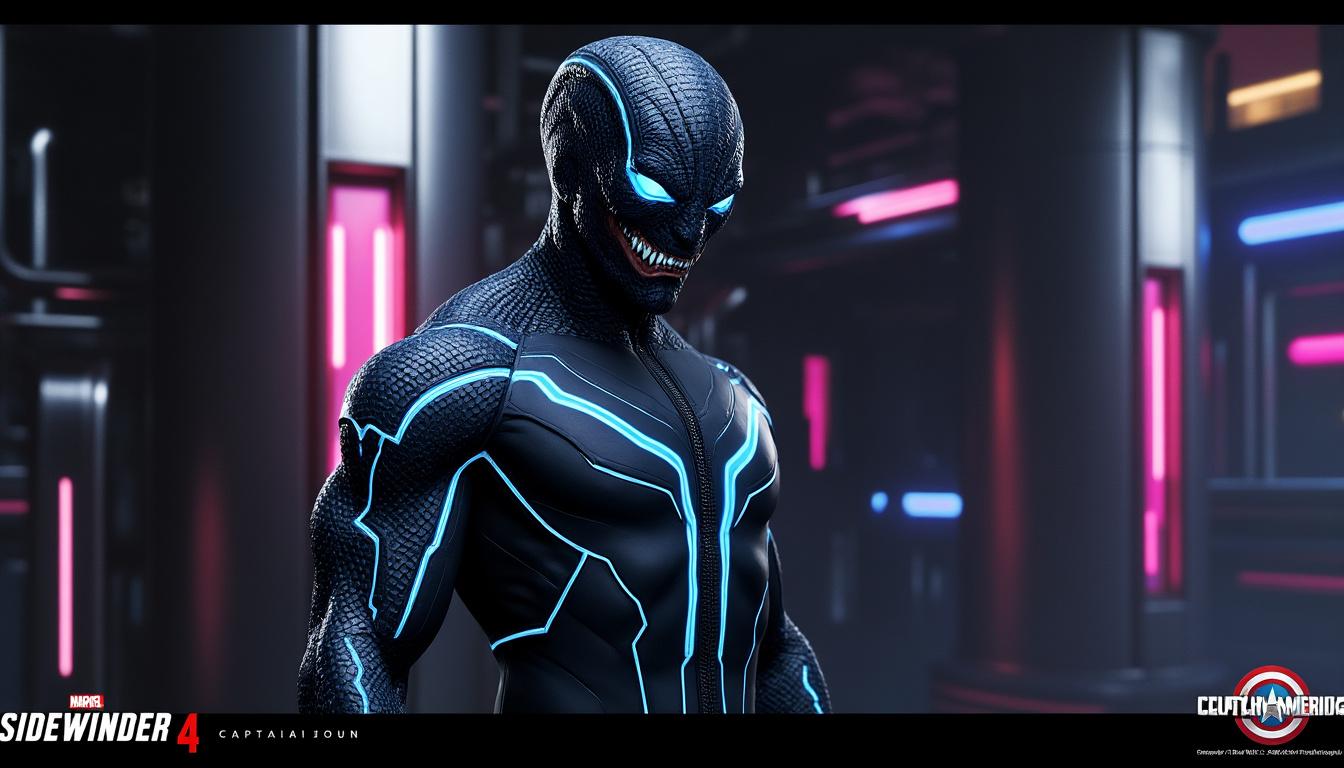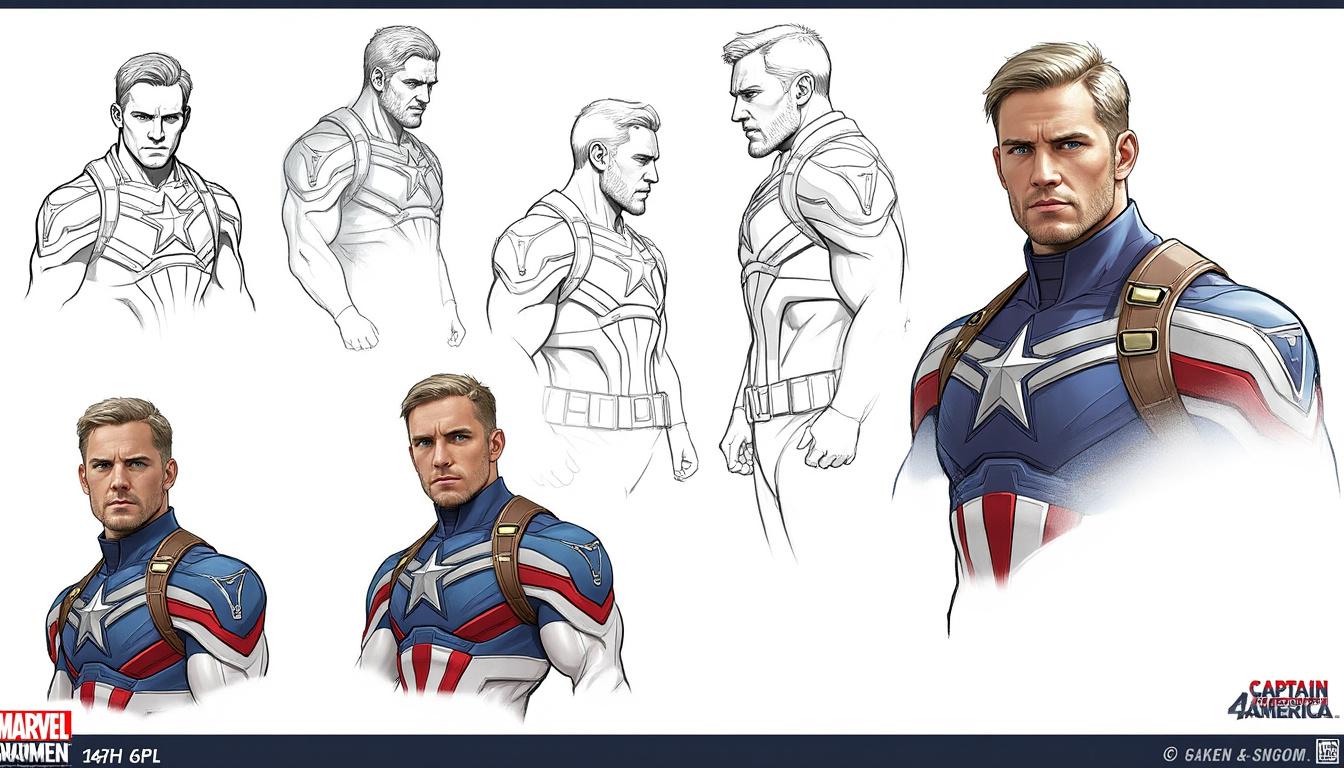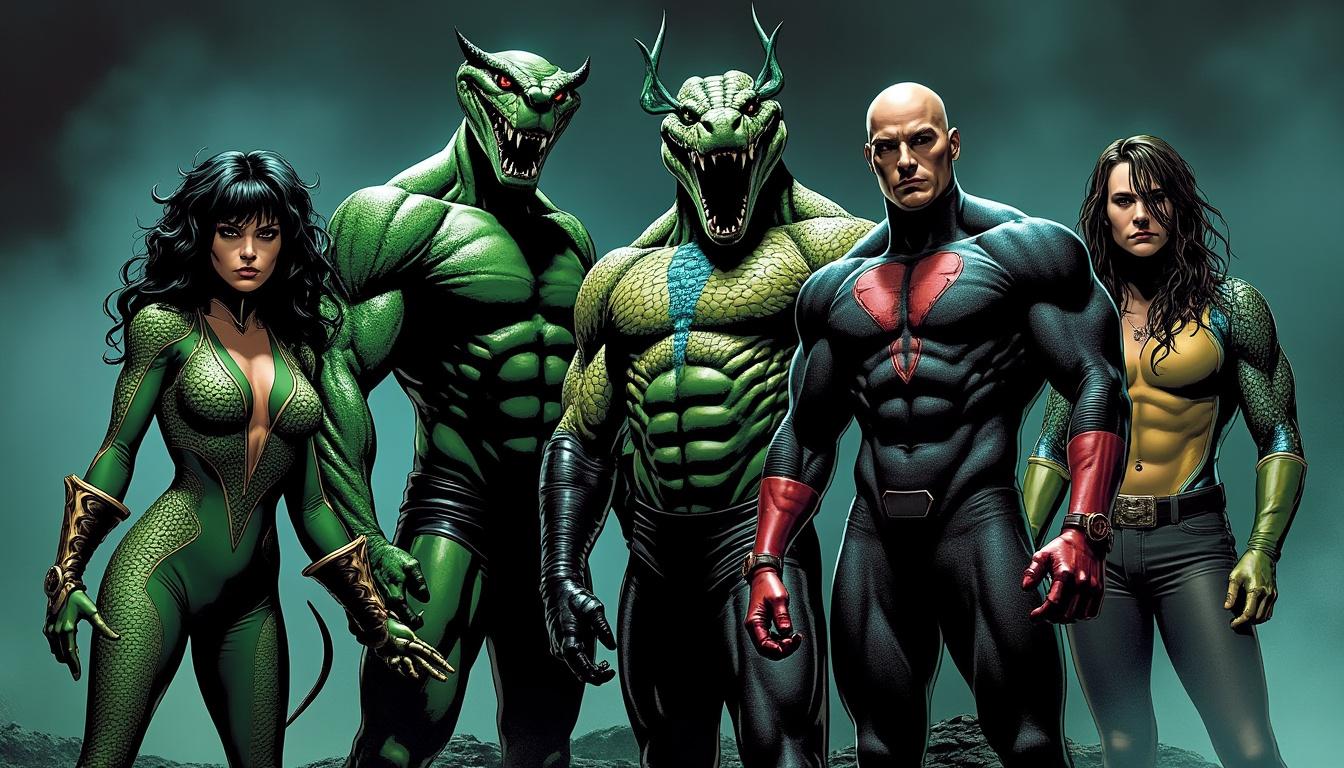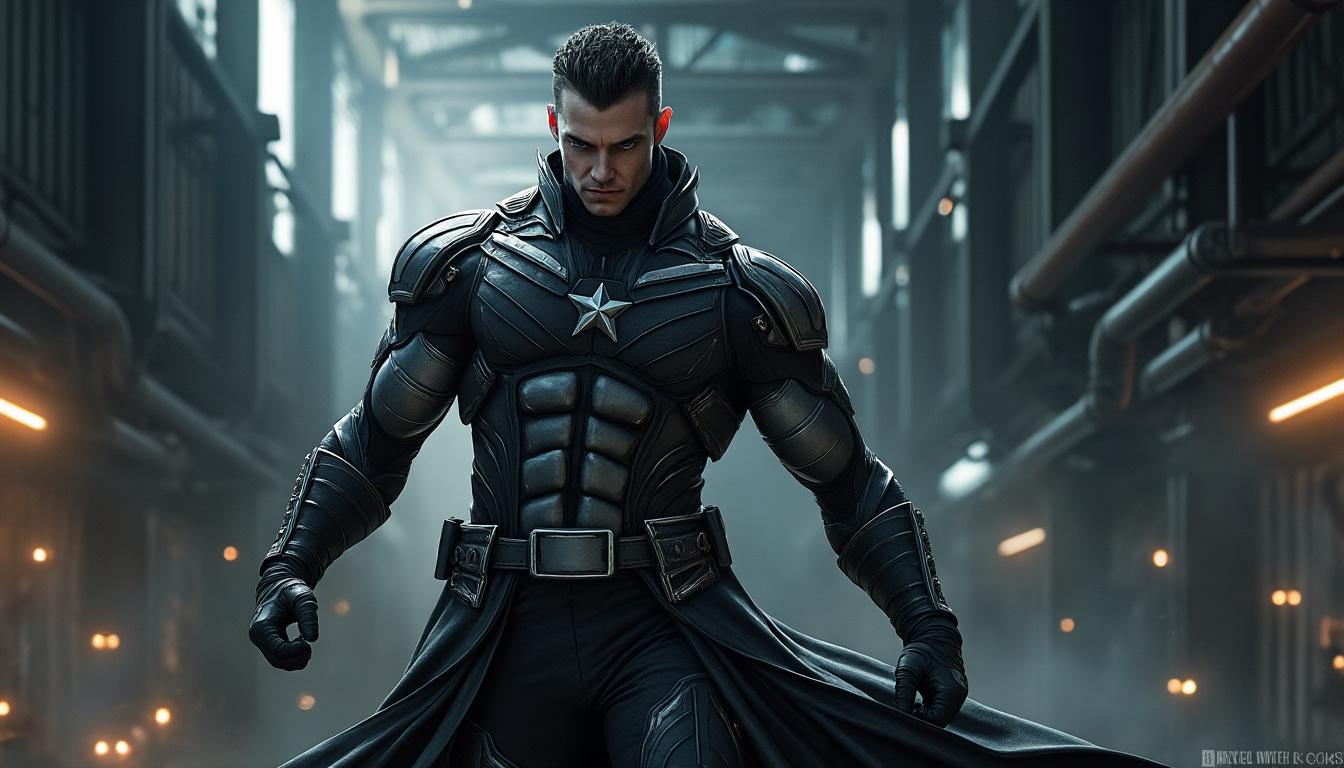The hype around Marvel Studios’ Captain America 4, officially subtitled Captain America: Brave New World, has taken a new turn with the unveiling of original concept art that showcases a previously unreleased villain. The film, directed by Julius Onah, features Anthony Mackie stepping into the role of Captain America, but several aspects of the villain’s design may surprise fans. This latest artistic reveal has sparked conversations about the direction of the film and the creative decisions that lead to the final production.
Behind the Scenes: Concept Art for Captain America 4 Villain
Concept art plays a crucial role in the filmmaking process, especially in the Marvel Cinematic Universe (MCU). As filmmakers develop a character, various iterations are often explored before settling on a final look. Recently, on Instagram, artist Michael Blackbear Uwandi shared concept images that give fans a glimpse into the initial design of Giancarlo Esposito’s character, Sidewinder.

According to Uwandi’s post, the art presents a very early version of the character, referencing a transformation that involves nano tattoos and a distinctive snake skin mask. This design represents a “first phase” for the character, offering a bold aesthetic that might have changed the tone of the villain as the project evolved.
Understanding Sidewinder’s Character
In the comics, Sidewinder is a member of the notorious Serpent Society, a group known for their snake-themed supervillains. The decision to introduce such a character adds layers of complexity to the Captain America narrative. However, the transformation from page to screen isn’t always direct, and this often leads to significant changes.
- Background: Sidewinder has powers that revolve around teleportation and manipulation. This could make for thrilling action sequences on screen.
- Personality: In the comics, he is often portrayed as cunning and strategic, making him a formidable adversary for any hero.
- Visual Style: The initial designs hint at a stylized and modern approach to superhero villainy, combining elements of technology with comic book flair.
The initial portrayal might have diverted from traditional villain aesthetics, challenging the status quo in the MCU by offering a fresh perspective.
The Role of Concept Art in Filmmaking
Concept art is not just about visualizing characters; it is paramount in setting the film’s tone. Examining how the MCU utilizes concept art can shed light on why certain decisions are made. In various iterations, artists provide a palette of ideas that help directors, producers, and actors understand the character’s essence.

Different elements play into the final decisions made during the development of a character, often influencing everything from costuming to dialogue. Concept artists work closely with the film’s creative team to ensure that the visual representation of a character aligns with the narrative’s direction and the overall universe of Marvel.
| Aspect | Importance |
|---|---|
| Visual Identity | Helps establish a character’s presence and impact on the audience. |
| Character Development | Guides the writing and performance as the actor comprehends the character’s essence. |
| Fan Engagement | Teases fans with potential appearances or storylines, enhancing anticipation. |
For Captain America: Brave New World, the original designs for Sidewinder could have significantly altered audience perceptions of the film’s villainy.
Marvel Studios and Character Evolution
The development of characters in the Marvel Studios franchise has become increasingly nuanced, with filmmakers keen on exploring the depth of their storylines. Prior films have shown that characters can evolve, turning from heroes to villains or vice versa. This fluid character development contributes to the suspense and intrigue that keeps audiences engaged. In the context of Captain America 4, such evolution is evident in the characterization of Sidewinder, whose initial design may evoke sympathy or resonate with viewers despite his villainous intentions.
The modern audience craves complexity in characters. The concept art of Sidewinder serves as a remarkable starting point for interrogating his motives and the world he inhabits. Changes implemented during production often influence how much of a character’s backstory is revealed, allowing for nuanced storytelling.
- Exploration of Themes: Characters like Sidewinder can explore internet-related themes such as surveillance, identity, and technological enhancement.
- Interpersonal Dynamics: The relationship between Captain America and his adversaries is examined in-depth, challenging the audience’s perspectives.
- Character Arcs: The arc that villains undergo can be far more interesting than a straightforward path of good vs. evil.
As such, the visuals, the internal conflicts, and storyline contribute to dynamic storytelling, making every development vital for audience emotional engagement.
Spectacle of Villain Teams in the MCU
The introduction of the Serpent Society signifies a broader trend in the MCU: the emergence of villain teams. Each individual in such teams often possesses unique abilities and backgrounds, allowing filmmakers more freedom in crafting elaborate narratives. This trend is evident in other series like The Falcon and the Winter Soldier as well as the overarching narratives across multiple Marvel Comics storylines.

The design and integration of characters from groups like the Serpent Society also highlight collaborations between studios and merchandise companies, such as Hasbro, LEGO, and Sideshow Collectibles. The visual diversity of these characters opens the door to a range of collectibles, enhancing further audience engagement and product reach.
| Villains | Abilities | Visual Identity |
|---|---|---|
| Sidewinder | Teleportation | Snake-themed design |
| Asp | Superhuman agility | Venomous attire |
| Cobra | Hypnotic abilities | Snake motif clothing |
The visual storytelling extends beyond the screen, influencing merchandise and collector items— another testament to the MCU’s extensive universe where every detail counts.
The Impact of Streaming on Character Development
The arrival of streaming platforms like Disney+ has changed how Marvel Studios approaches character development. It allows for extended storytelling beyond the constraints of feature films, giving characters like Sidewinder their due narrative space. As audiences have witnessed with previous shows, the intricate background and development can yield compelling content.
In the current age, viewers anticipate more in-depth examinations of characters, their motivations, and their transformations. Characters that may initially appear as antagonists in films might be explored further in series, enhancing their arcs significantly.
- Expanded Universe: Streaming allows for a deeper exploration of villains and heroes.
- Character Exploration: Characters can evolve through multiple appearances, influencing audience perceptions.
- Engagement with Fans: With behind-the-scenes looks, audiences develop a stronger attachment to the characters.
This evolving landscape ensures that even ensemble members of villain teams like the Serpent Society can gain valuable screen time, making every member relatable and significant in the larger narrative.


